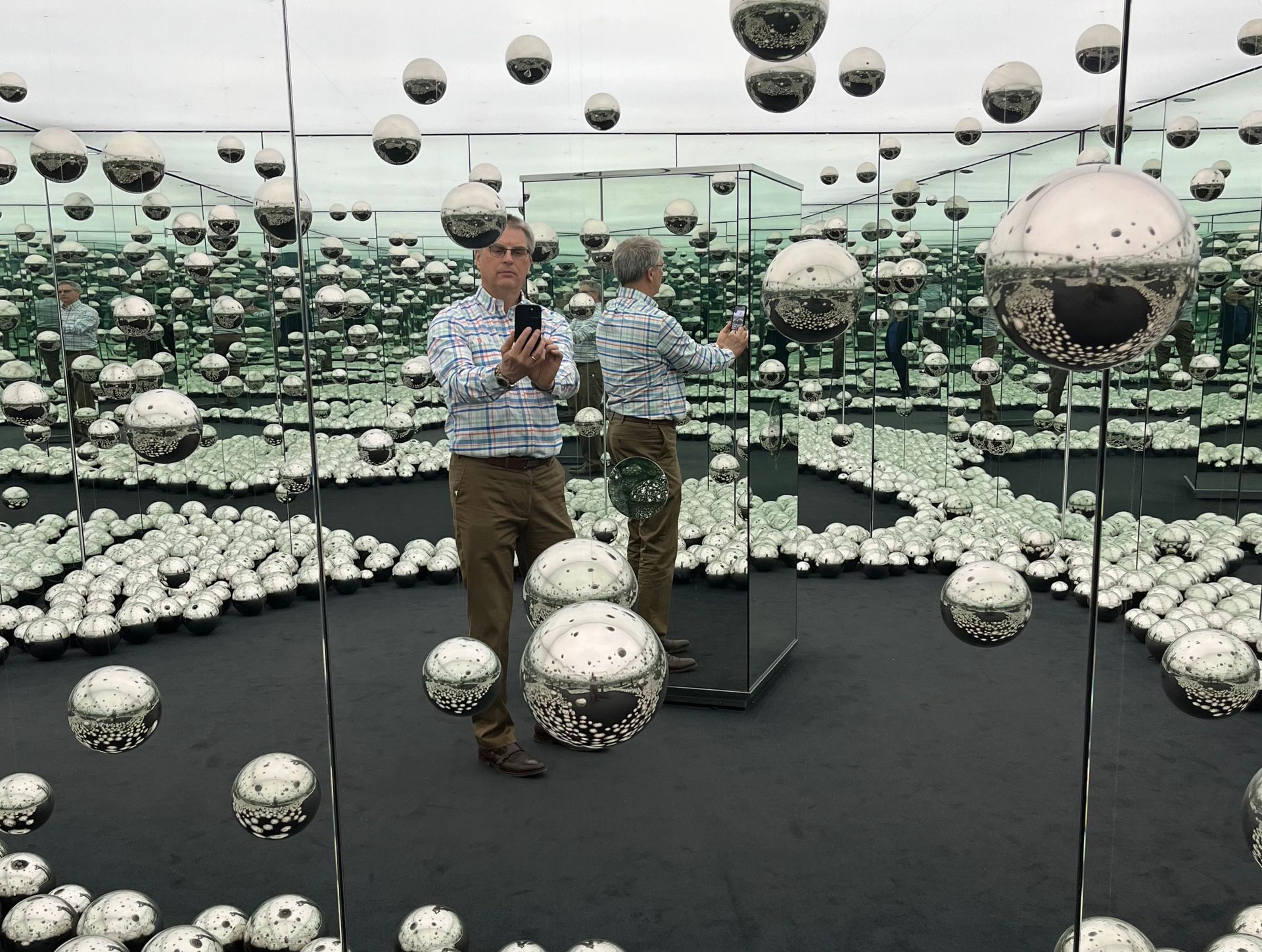The optics of an Infinity Room

Blog vol 3. 47. The optics of an Infinity Room.
In early May I take a week off from seeing eyes and spend most of my time getting outside, preparing our yard for the warmer weather. A nice and welcome change, we also spend some time at bookstores and, if things are going really well, a visit to the Art Gallery of Ontario (AGO).
The day at the AGO was really interesting. We spent time with the Kurelek collection (a favourite), the European Masters, nineteenth-century into early twentieth-century art (so much going on here), and explored some special exhibits.
In 2018, a Japanese artist, Yayoi Kusama, was featured in a large exhibit at the AGO highlighting her conceptual art particularly her “Infinity mirrored rooms” which generated long wait lists for viewing. The AGO has since purchased one for their collection. We finally were able to visit this mirrored room, called Let’s Survive Forever. You book a time and you get 60 seconds to be in the room. Pictured here is me in infinity mode.
I wanted to experience the space and the geeky side of me wanted to understand how a mirrored room works. Who knows, I might try building my own infinity room, and I probably could do it for a lot less than the 2 million dollars the AGO spent on this one.
The optics are quite basic: you need two mirrors that are parallel to each other which can bounce a beam of light back and forth an indefinite (theoretically infinite) number of times. The reflections appear to recede into the distance because the light actually is traversing the distance it appears to be traveling. The first time I noticed this effect was in a hotel bathroom where there were two mirrors and you could see all the way through the mirror as far back as possible.
In Let’s Survive Forever there were many mirrors and many reflections.
I took some pictures while I was in there and hoped the megapixels in the phone would zoom me out to infinity. To my disappointment, my extra megapixels told me what I should have known from long years of working with optics: even with the best of antireflection coatings, the image starts to diminish very quickly. Every time it bounces off the mirror, the light loses intensity, even if it is only 1% of its brightness, and after an “infinite” number of reflections the brightness goes down. So my infinite images are not appreciated by my megapixels or by my limited eyes and just fade into the distance.
Which is the point.
We all know that when we look into a horizon the colours are muted and less distinct. Looking through an astronomical telescope can get you out to “infinity” too, but not through the horizon, where our thick, murky atmosphere fades the light very quickly. So a painter will desaturate their colours when they paint a horizon and Yayoi Kusama uses many mirrors in a small space to achieve the same “disappearing into the horizon effect”, it’s just you that is disappearing.
Which is the point.
‘til next week,
the good doctor






